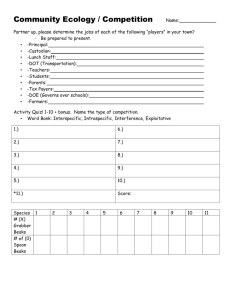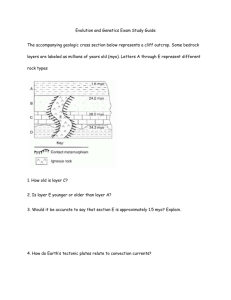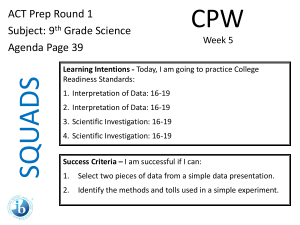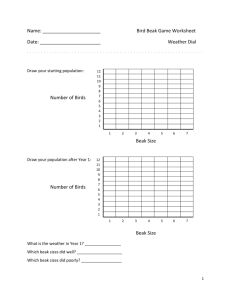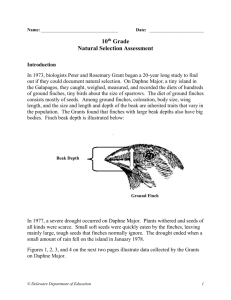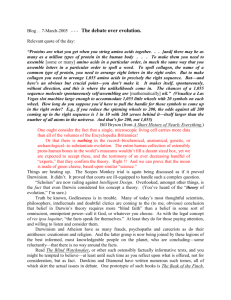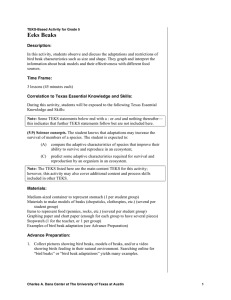Handout 3
advertisement
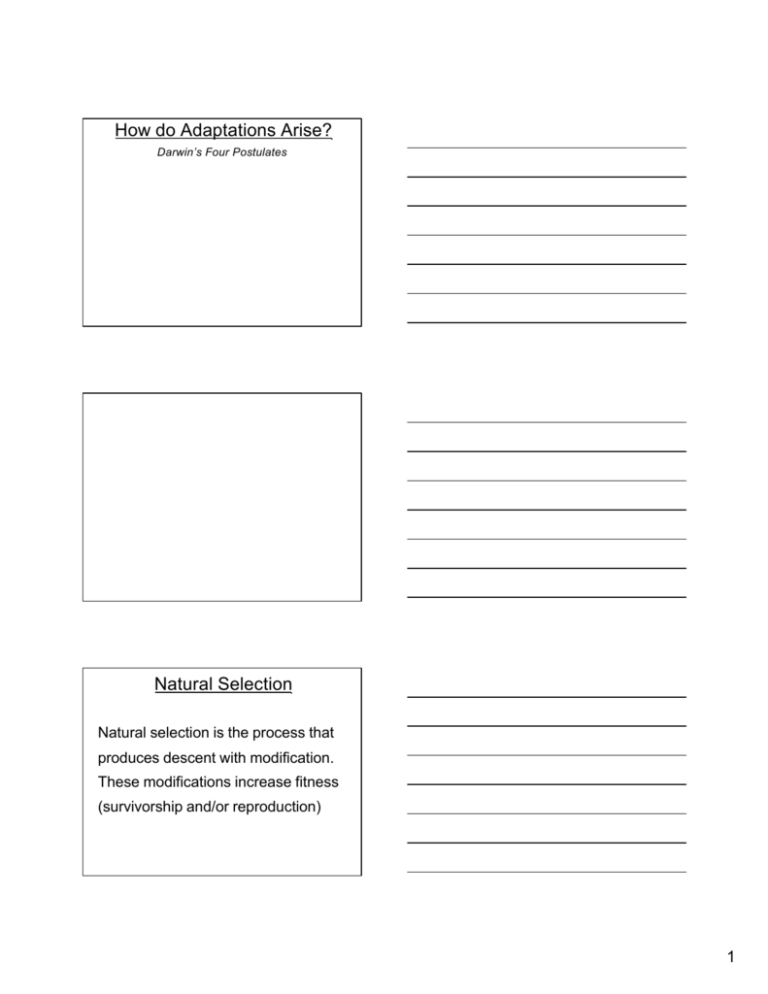
How do Adaptations Arise? Darwin’s Four Postulates Natural Selection Natural selection is the process that produces descent with modification. These modifications increase fitness (survivorship and/or reproduction) 1 Natural Selection Natural Selection Evolution of beak shape in Galápagos Finches (Drs. Peter and Rosemary Grant) 1. 14 species found on islands. 2. Similar in colour and size: 4-6” in length; brown – black. 3. Beak size and shape differ substantially. 4. Beak used as a tool for feeding. 2 5. Beak morphology reflects diversity of foods utilized by each species. 6. Warbler finch feeds on insects, spiders and nectar. 7. Woodpecker finch uses twigs or cactus spines as tool to pry insect larvae or termites from dead wood. woodpecker vegetarian warbler 8. Vegetarian finch eats leaves and fruits. 9. Medium ground finch eats seeds. seed size Beak Size and Seed Size small large beak size Darwin’s Four Postulates 1. Variation among individuals? 1. Grants marked individuals using leg bands. 2. Measured beak depth. 3. Some individuals had shallow beaks, others had deep beaks. 4. Most individuals had medium size beaks. 3 Darwin’s Four Postulates 2. Is beak variation heritable? 1. Dr. Peter Boag measured beak size of parents and offspring once they reached maturity. 2. Correlated midparent beak depth with offspring beak depth using a linear regression. 3. Discovered that much of the variation in offspring beak depth was explained by parent beak depth. 2. Is beak variation heritable? What are some of the concerns with measuring heritability this way? 1. In 1977 there was a drought and a large die off of ground finches (~80%). 2. Die off corresponded with a large reduction in seed availability. 3. Many dead birds were found emaciated. 4. In general, many more individuals are born then survive to reproduce. 4 Beak Size in Ground Finches drought Beak Depth drought El Niño 1970 1980 1990 Year 5 Units of Natural Selection 1. Genes 2. Individuals 3. Groups • a few individuals • populations • species 1. Dr. Wade used flour beetles to test for the possibility of group selection. 2. Showed that it was possible to reduce group fecundity, even though individuals are otherwise selected to increase fecundity. 3. Group selection requires strong barriers to migration and high “extinction” of unfavourable groups. 6


